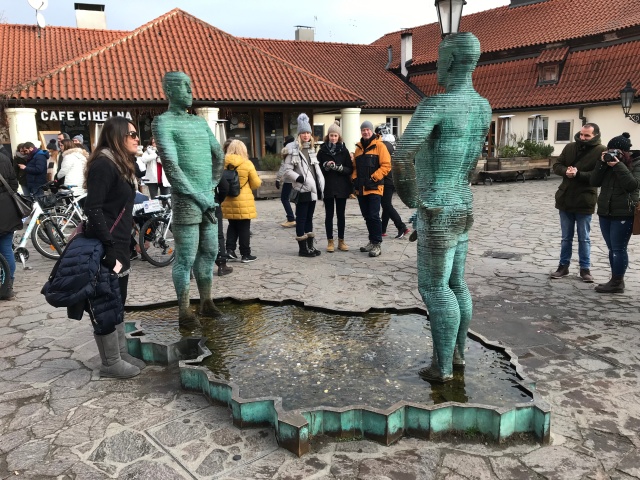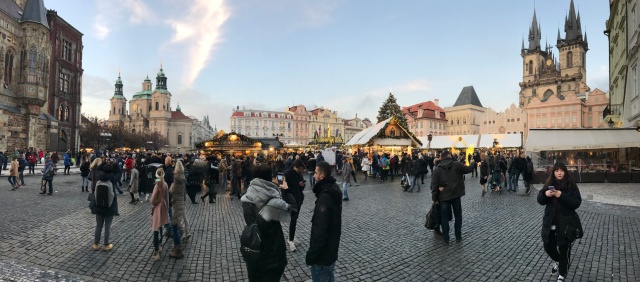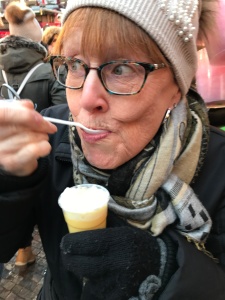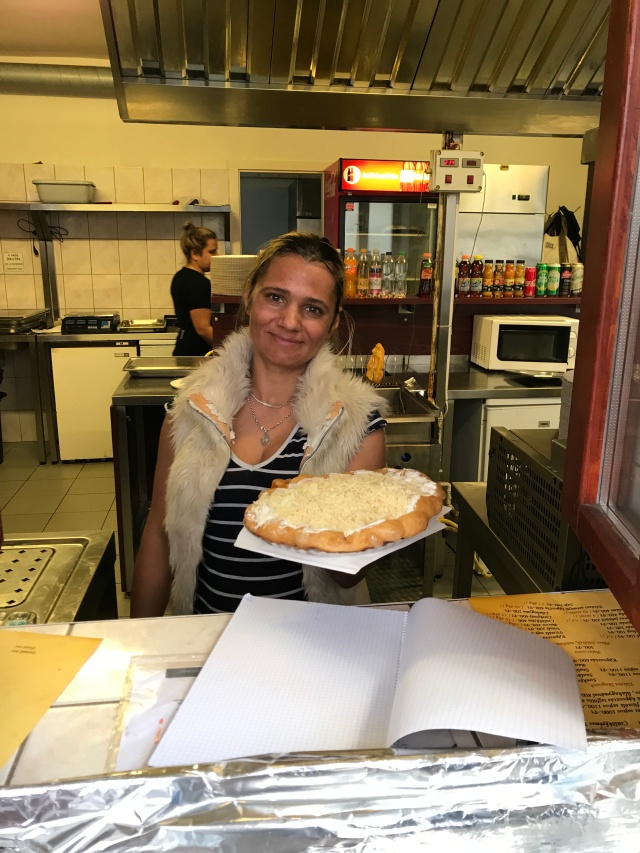Dohány Street Synagogue
I have to admit I didn’t know a great deal about the history of Budapest before my arrival. But I sure learned a lot, just from visiting local spots. The Dohány Street Synagogue, also known as the Great Synagogue, is the largest in Europe and the second largest in the world.  The odd thing is that it resembles a Christian church. The architect was not Jewish. The synagogue has a Moorish Revival type architecture and also has a pipe organ and pulpits which are not normally found in synagogues.
The odd thing is that it resembles a Christian church. The architect was not Jewish. The synagogue has a Moorish Revival type architecture and also has a pipe organ and pulpits which are not normally found in synagogues.
. 
It seems that the Jewish people of Budapest had a slightly better chance of survival than the Jewish people from the countryside, who had less than a 10% chance of survival. Ghettos were established in Budapest, but not until late in the war. Of the 860,000 people considered Jewish inside the borders of 1941–1944, only about 255,000 survived.

Two thousand of deceased Jewish people from WWII are buried in the gardens at the synagogue.
SHOES ON THE DANUBE

The Shoes on the Danube is a memorial to honor the Jews who were killed by Arrow Cross militiamen in Budapest during World War II. They were ordered to take off their shoes, and were shot at the edge of the water so that their bodies fell into the river and were carried away. It represents their shoes left behind on the bank.
STATUE OF IMRE NAGY
 A statue of the hero of Hungary’s anti-Soviet 1956 uprising, Imre Nagy, was erected between Freedom Square and the Parliament at a plaza called Martyr’s Square. Nagy stands on a bridge over an artificial pool of water. With his back to the Soviet monument, he gazes toward the parliament building, a symbol of Hungary’s new democracy. A communist politician with a democratic mindset, he led the Revolution of 1956 and fought for Hungary’s freedom as a martyr till the end.
A statue of the hero of Hungary’s anti-Soviet 1956 uprising, Imre Nagy, was erected between Freedom Square and the Parliament at a plaza called Martyr’s Square. Nagy stands on a bridge over an artificial pool of water. With his back to the Soviet monument, he gazes toward the parliament building, a symbol of Hungary’s new democracy. A communist politician with a democratic mindset, he led the Revolution of 1956 and fought for Hungary’s freedom as a martyr till the end.
Our guide said the government is probably going to move the statue, likely because of Nagy’s communist background.
THE HOUSE OF TERROR

This museum with pictures & video monitors shows what life was like living under both the German occupation & Russian occupation periods.  The building was used by the Arrow Cross Party (a far-right fascist group)and the AVH (Hungarian Secret police.) This is a sad museum to visit, especially the basement where incarceration and torture took place.
The building was used by the Arrow Cross Party (a far-right fascist group)and the AVH (Hungarian Secret police.) This is a sad museum to visit, especially the basement where incarceration and torture took place.
GUNSHOTS IN THE WALLS

This monument is dedicated to the victims of the deadly fire of the AVH who fired on citizens in Kossuth Lajos Square during the 1956 Uprising. The balls on the wall represent the bullet holes.
THE HOSPITAL IN THE ROCK
 This hospital was created in caverns under the hills of Buda. Completed in February 1944, It was built to provide general emergency care for injured civilians and soldiers. It was used during the Siege of Budapest in Dec. 1944 – February, 1945. It was meant to hold 60-70 patients, but at one point held 600! Because it was a Red Cross hospital, everyone was treated soldiers, Hungarian and German and civilians.
This hospital was created in caverns under the hills of Buda. Completed in February 1944, It was built to provide general emergency care for injured civilians and soldiers. It was used during the Siege of Budapest in Dec. 1944 – February, 1945. It was meant to hold 60-70 patients, but at one point held 600! Because it was a Red Cross hospital, everyone was treated soldiers, Hungarian and German and civilians.
The hospital was again used during the Hungarian Uprising of 1956 against Soviet rule.
Between 1958-62, the hospital equipment was upgraded for a chemical or nuclear attack.
Now, the facility is a tourist site, with many wax figures and guided tours. No photos allowed ☹️









































































































 The building was used by the Arrow Cross Party (a far-right fascist group)and the AVH (Hungarian Secret police.) This is a sad museum to visit, especially the basement where incarceration and torture took place.
The building was used by the Arrow Cross Party (a far-right fascist group)and the AVH (Hungarian Secret police.) This is a sad museum to visit, especially the basement where incarceration and torture took place.

 This hospital was created in caverns under the hills of Buda. Completed in February 1944, It was built to
This hospital was created in caverns under the hills of Buda. Completed in February 1944, It was built to





















